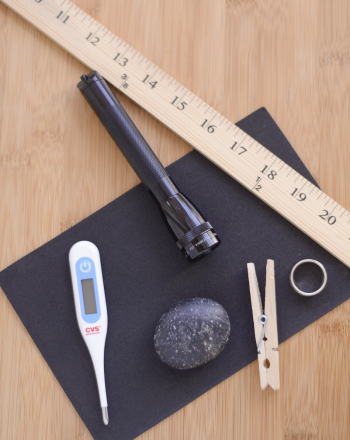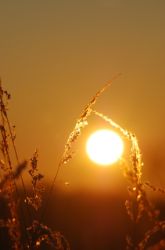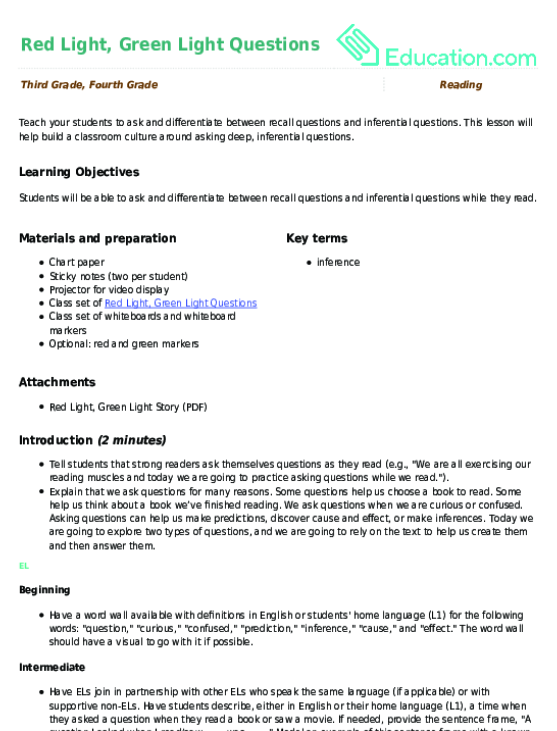Science project
Heat from Light Bulbs
Let there be light! At the flick of a switch, a light bulb can light or illuminate an entire room, but what else is happening? One the basic laws of physics, the conservation of energy, tells us that energy is neither created nor destroyed: rather, it can only be transformed from one form to another. In the case of the light bulb, electrical energy is being transformed into light and thermal (heat) energy. Different wattages and types of bulbs give off varying amounts of light and heat. In this light bulb science project, we'll be working with incandescent and compact fluorescent lamp bulbs (CFL’s).
Problem
What type of bulb and wattage produces the most heat?
Materials
- A goose-neck style lamp (make sure it can safely use all light bulbs listed!)
- 6 Incandescent light bulbs: 25 watt, 40 watt, 60 watt, 75 watt, 100 watt, and 150 watt
- 2 Compact Fluorescent light bulbs: 7 watt, 23 watt
- Thermometer
- Measuring tape or yard stick to measure distance between the thermometer and light bulb
- White towel
- Stopwatch
- A piece of paper and pencil to record your observations
Procedure
- Lay out the white towel on a flat table.
- Place the lamp on one end of the towel.
- Making sure the lamp is unplugged, screw in lowest wattage bulb and keep the lamp turned off.
- Place the thermometer at the other end of the towel.
- Measure the distance between thermometer and light bulb.

- Check and record starting temperature of thermometer.
- Making sure the lamp is pointed at the thermometer, turn the lamp on and start the stopwatch.

- After 5 minutes have passed, measure and record the temperature on thermometer.
- Turn the lamp completely off and wait for the light bulb to cool down before removing it.
- Make sure that the thermometer has also cooled down to the initial starting temperature you recorded.
- Repeat steps 2-9 with the next highest wattage bulb until you’ve tested all the bulbs.
**Things to Remember**
- Always wait for the bulb and thermometer to cool down before testing any new bulbs!
- Be sure the lamp is turned off and unplugged completely when switching bulbs.
- Make sure distance between bulb and thermometer is the same for each trial.
- The starting temperature should always be the same for each trial.
Observations & Results
What did you observe? You may have noticed that the higher the wattage, the highter the temperature. The 150-watt incandescent bulb should have yielded your warmest measurement (Why do you think this is?), while the CFL’s should have been much cooler than most of the incandescent bulbs.
Why?
So what’s the difference between incandescent bulbs and compact fluorescent bulbs? An incandescent bulb emits light through the heating of a small metallic coil called a filament surrounded by gases that heat to approximately 4000 F! While providing plenty of light, they release 90% of their energy as heat making them fairly inefficient in comparison to compact fluorescent lamp bulbs.
Compact fluorescent bulbs create invisible UV light that interacts with the coating of the bulb in order to create visible light. They are known to be more efficient and longer-lasting (and as you may have noticed, take longer to heat up).
Conclusion
Incandescent light bulbs burn much hotter than compact fluorescent light bulbs do. They possess very different properties—incandescent bulbs rely upon metals, gas and heat, while CFL’s rely more upon a reaction between the internal and outside materials. For these reasons, incandescent lights emit more heat energy than CFL’s.
Education.com provides the Science Fair Project Ideas for informational purposes only. Education.com does not make any guarantee or representation regarding the Science Fair Project Ideas and is not responsible or liable for any loss or damage, directly or indirectly, caused by your use of such information. By accessing the Science Fair Project Ideas, you waive and renounce any claims against Education.com that arise thereof. In addition, your access to Education.com's website and Science Fair Project Ideas is covered by Education.com's Privacy Policy and site Terms of Use, which include limitations on Education.com's liability.
Warning is hereby given that not all Project Ideas are appropriate for all individuals or in all circumstances. Implementation of any Science Project Idea should be undertaken only in appropriate settings and with appropriate parental or other supervision. Reading and following the safety precautions of all materials used in a project is the sole responsibility of each individual. For further information, consult your state's handbook of Science Safety.













